Tucked away in southeastern Sicily, Modica grabbed my attention the second I glimpsed its dramatic canyon landscape. Honey-colored Baroque buildings cling to steep hillsides, forming a jaw-dropping scene that’s earned UNESCO World Heritage recognition.
But honestly, what really sets Modica apart? It’s not just the architecture. The town is a Baroque wonder and also the proud guardian of ancient chocolate-making traditions that go back to Spanish rule.
I visited in early 2025 and wandered Modica’s twisting streets, stumbling upon cozy piazzas and grand churches that reveal the town’s rich history. Modica Alta and Modica Bassa—the upper and lower halves—each give you a different feel and view of this Sicilian gem.
Between peeking at architecture, I slipped into tiny workshops where artisans still make chocolate following Aztec-inspired methods brought over centuries ago.
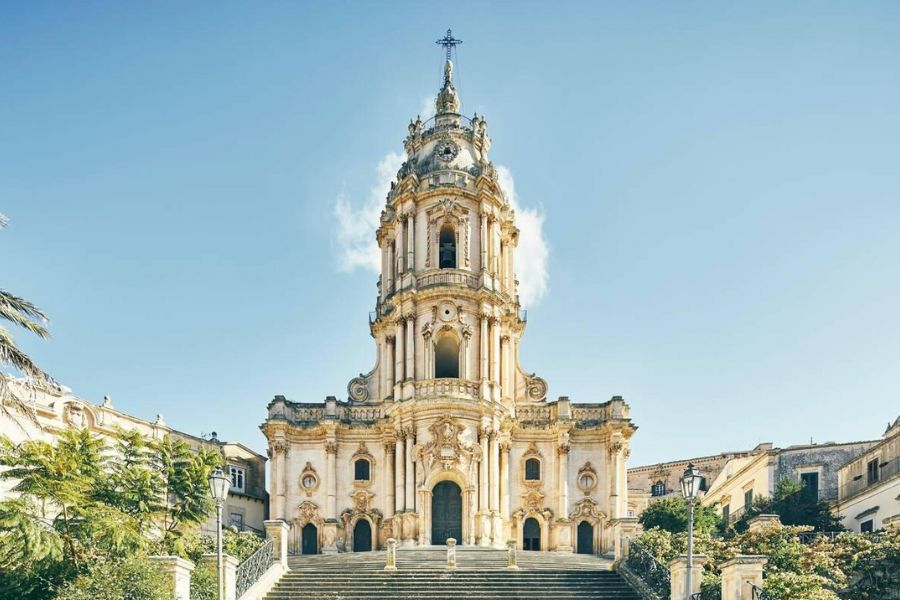
The chocolate of Modica is nothing like the stuff you find elsewhere. It’s granular, with a texture that lets the raw sugar crystals shine through. Local chocolatiers walked me through how they mix old techniques with new flavors—think cinnamon, vanilla, pistachios, or even sea salt. That blend of taste and history, set against Modica’s Baroque beauty, makes this place a must for anyone planning a Sicilian adventure.
A City in the Canyons: The Setting and Ambiance of Modica
Modica sprawls across deep limestone gorges, making it one of Sicily’s most dramatic urban scenes. The city’s unique topography shaped both its buildings and the daily rhythms of life here for centuries.
Distinctive Canyon Landscape
When I saw Modica from above, I felt stunned—buildings seem to tumble right down the canyon walls. The town fills two main valleys, with the historic center stretching along the slopes of Modica Alta and Modica Bassa.
Ancient stone stairs and tight paths wind between levels, revealing new vantage points at every turn. I kept finding panoramic spots where Baroque churches and golden stone houses pop against the rocky background.
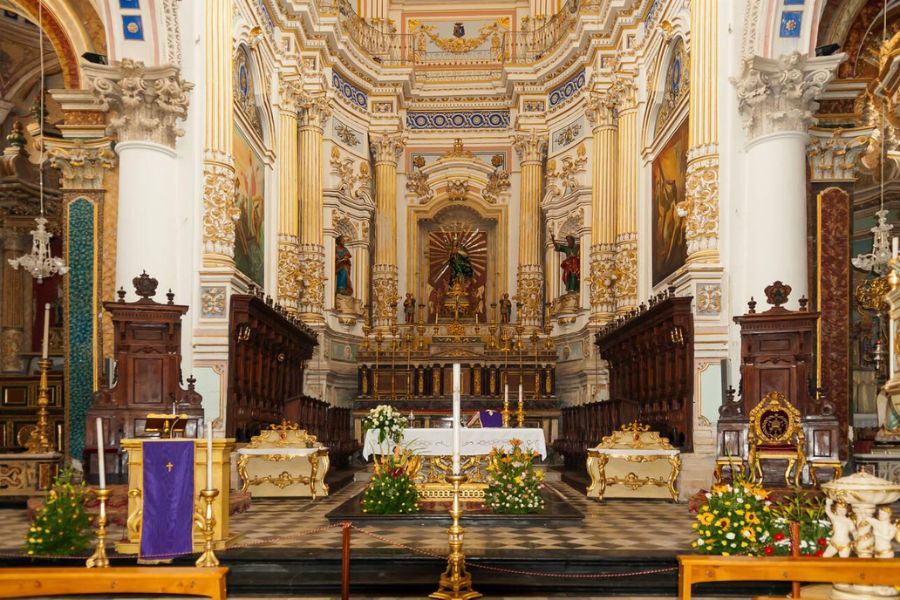
The Torrente Pozzo dei Pruni and Torrente Janni Mauro, two seasonal streams, once carved these valleys. Now, those old waterways serve as the main roads twisting through town.
Gardens and Parks
Despite all the steep terrain, Modica still has some lovely green spots. The Giardino Comunale on Via Resistenza Partigiana became my go-to for shade and a break from the summer heat.
Villa Garibaldi, closer to the center of Modica Bassa, is small but charming. It’s filled with Mediterranean plants, benches, and little fountains—locals gather here in the evenings to unwind.
If you want a wilder vibe, check out the canyon edges where wild herbs grow. After it rains, the air fills with rosemary and thyme. Walking paths along the upper rim deliver awesome views over the city.
All over town, private gardens cling to terraces, splashing color with geraniums, bougainvillea, and citrus trees in classic Sicilian pots.
Historic Neighborhoods
Wandering Modica’s old quarters feels like time travel. The UNESCO-listed center splits into neighborhoods, each with its own personality.
Modica Alta, the oldest area, clusters around the grand San Giorgio Cathedral. Here, medieval buildings blend into the Baroque rebuild after the 1693 earthquake. I loved getting lost in the maze of narrow lanes, where tiny shops sell local treats.
Modica Bassa came later and shows off the Duomo di San Pietro and stylish palazzi along Corso Umberto I. This main street follows the old riverbed and links the commercial heart of town.
The Jewish Quarter, once home to a thriving community, still hints at its past with street names and architectural quirks. Look for carved symbols in doorways as you wander the area.
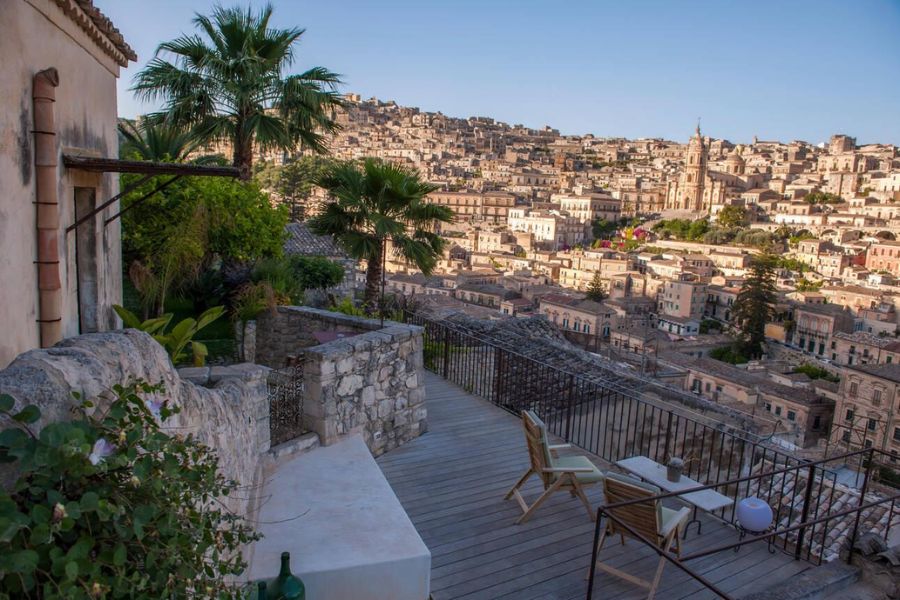
Climb up to the rocky outcrop with the ancient Castello dei Conti for a bird’s-eye view of Modica’s canyon layout. The medieval counts once ruled from here, and the panorama is worth the effort.
Baroque Splendor: Architectural Wonders and Heritage
Modica’s canyon setting gives a dramatic stage for some of Sicily’s best Baroque architecture. UNESCO honored the town in 2002 for its incredible post-earthquake rebuilding, which created a harmonious Baroque cityscape.
Iconic Churches and Cathedrals
St. George’s Cathedral towers over Modica, its grand façade and 250-step staircase impossible to miss. I stood in awe of the bell tower and the way sunlight plays on the golden stone. Inside, I found stunning frescoes and a pipe organ from 1885.
The Church of St. Peter is another standout, its façade lined with statues of the 12 apostles. The simple exterior hides an interior that’s surprisingly ornate.
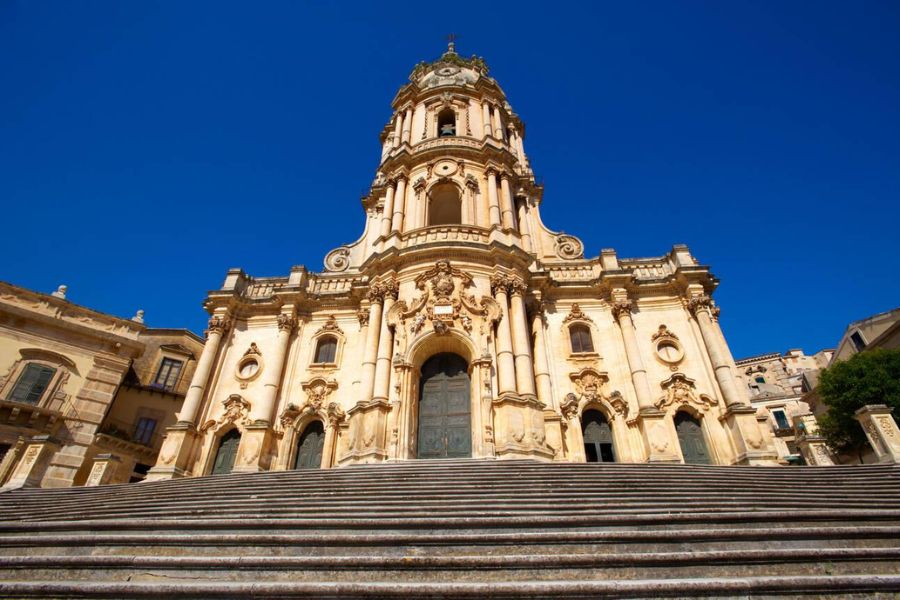
San Nicolo Inferiore, partly carved into the rock, is one of the oldest religious sites in town. I didn’t expect to find ancient Byzantine frescoes tucked away inside.
Notable Buildings and Structures
Palazzo Polara drew me in with its wild balconies, each held up by quirky stone figures. These playful touches really show off the Baroque spirit that makes Modica unique.
Palazzo Napolino-Tommasi Rosso features gorgeous iron balconies and detailed window frames. I spent ages just admiring the stonework and elegant lines.
The old town itself is a sort of architectural artwork, with buildings stacked along canyon walls. Narrow streets and sudden staircases keep the views surprising.
Notable Baroque Structures in Modica:
- Palazzo Castro-Grimaldi
- Palazzo dei Mercedari
- Palazzo Tommasi Rosso
- Chocolate Museum (inside a Baroque building)
Rediscovery of Baroque Art
After the 1693 earthquake devastated southeastern Sicily, local architects like Rosario Gagliardi and Vincenzo Sinatra sparked a Baroque renaissance in Modica. They transformed disaster into beauty.
Modern preservation efforts have helped shine a light on Modica’s Baroque treasures. Restoration teams work hard to keep the original character while making sure these buildings stay safe.
The annual Baroque Spring Festival brings special exhibitions and guided tours. I planned my trip to catch this event and got to see buildings that usually stay closed.
Libraries and Cultural Institutions
The Biblioteca Comunale holds a trove of historic documents, including manuscripts about Modica’s rebuilding after the earthquake. On a rainy afternoon, I browsed rare maps that charted the town’s growth.
Museo Civico’s exhibits on Baroque art and architectural models gave me a better grasp of the engineering behind these structures. The collection of drawings was especially impressive.
The former Jesuit College now serves as a cultural hub, hosting exhibitions on Baroque themes. Its courtyard is a lovely example of period stonework.
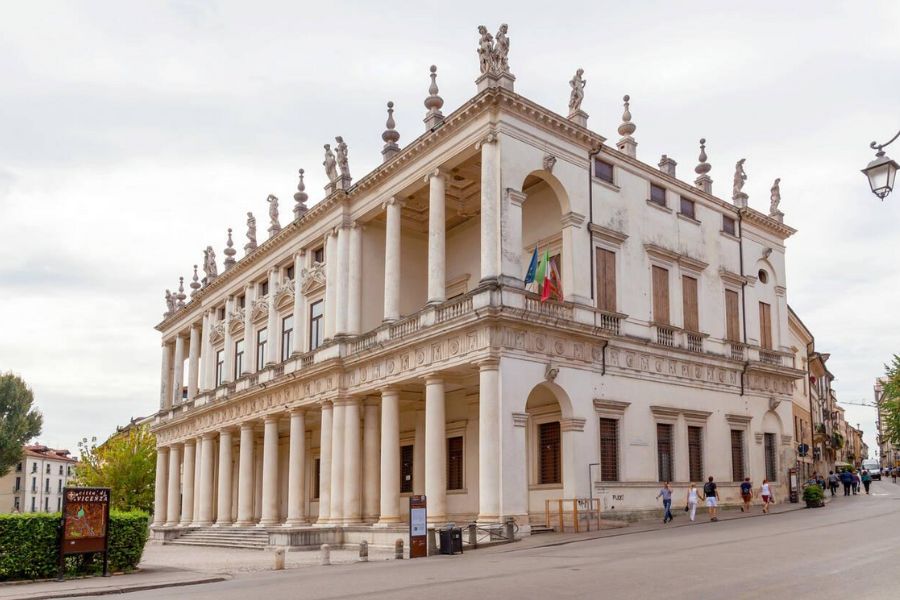
Palazzo della Cultura often presents talks and workshops on architectural conservation. I sat in on a fascinating presentation about traditional restoration methods still in use today.
Modica’s Chocolate Traditions: From Ancient Customs to Modern Delights
Modica’s chocolate is one of Sicily’s most cherished culinary traditions, and its unique preparation sets it apart from the rest. The grainy texture and pure flavors have kept chocolate lovers coming back for centuries.
Origins of Modica Chocolate
The chocolate tradition here started in the 16th century, when the Spanish ruled Sicily. They brought chocolate-making skills learned from the Aztecs.
Unlike most European chocolate, which evolved with modern processing, Modica’s version stayed true to its roots. It’s wild how little the process has changed, keeping a direct link to chocolate’s earliest days in Europe.
I realized during my visit that this chocolate heritage is one of Sicily’s cultural treasures. The Spanish influence led to a unique custom that’s now woven into Modica’s identity.
Traditional Chocolate-Making Processes
What really makes Modica chocolate stand out is how it’s made. It skips the conching process, so the texture stays grainy.
Here’s how they do it:
- They stone-grind cacao beans at low heat.
- Coarse sugar gets mixed in but never fully melts.
- The mixture is worked gently, never overheating.
- No extra fats are used—just cocoa butter.

This process gives the chocolate its signature texture, with sugar crystals you can actually feel. When I visited a workshop, the artisan explained how this keeps more of the cacao’s natural flavors intact.
Classic flavors include vanilla, cinnamon, and chili, but modern makers now add citrus, nuts, and other creative twists.
Famous Chocolate Boutiques
As I wandered Modica’s streets, I found plenty of chocolate boutiques keeping the tradition alive. Antica Dolceria Bonajuto, the city’s oldest shop, has been running since 1880—recipes passed down for generations.
Other favorites include Dolceria Rizza and Sotto San Pietro, where you can watch chocolate being made and sample all sorts of flavors. Many shops even offer chocolate-making workshops so you can try it yourself.
I always grab a few chocolate bars as souvenirs—they’re easy to pack and make great gifts. Most boutiques cluster in the historic center, so sampling different ones is a breeze.
Most shops also serve Modica-style hot chocolate, which is thicker and less sweet than what you might expect elsewhere.
Immersive Experiences: Exploring Modica’s Attractions
Modica packs a surprising number of cultural, historic, and natural experiences into its dramatic canyon setting. I found so many ways to dive into the city’s unique character during my stay.
Museums and Historical Sites
The Chocolate Museum is easily Modica’s tastiest attraction. I watched artisans craft chocolate using ancient Aztec techniques passed down from Spanish rulers. The hands-on workshops let me make my own chocolate bar—a souvenir that didn’t last long!
Palazzo Polara wowed me with its grand Baroque façade and impressive art. The building tells stories of Modica’s wealthy past through its design and decor.
Castello dei Conti, though partly ruined, offers sweeping views over the town. I explored its medieval walls and learned about Modica’s role in Sicily’s turbulent history.
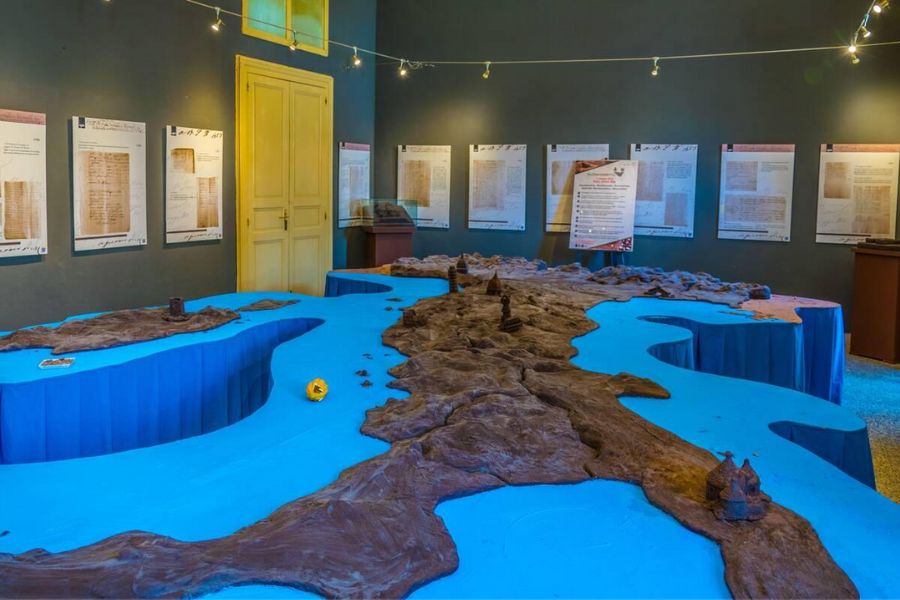
The Church of San Giorgio stands as a UNESCO World Heritage site. Its staircase—250 steps!—and ornate interior really show off why Modica is famous for Baroque style.
Archaeological Ruins and Excursions
Just outside Modica, the Cava d’Ispica archaeological park holds cave dwellings from prehistoric times. I explored rock-cut tombs, Byzantine churches, and ancient catacombs during a half-day trip.
Guided walking tours of Old Modica reveal hidden corners, like the ancient Jewish Quarter with its twisty alleys and old synagogue sites. My guide pointed out details I would’ve missed.
Day trips to other Baroque towns—Ragusa and Noto—add variety to the Modica experience. Each has its own style, even though they share that UNESCO status.
The remains of ancient Greek settlements at Kamarina make for an interesting coastal side trip, offering a peek at Sicily’s layers of history.
Parks and Nature Trails
Hiking the canyon trails around Modica gave me some of the best views of the town’s stacked architecture. The paths wind through olive groves and past ancient cave homes cut into limestone.
Parco della Rimembranza is a peaceful green spot right in town. I liked grabbing a gelato and watching locals stroll by in the evening.
Cava Gucciardo nature reserve offers Mediterranean plants and wildlife in a protected canyon. My morning walk there was filled with wildflowers and birdsong—so relaxing.

If you’re up for more adventure, guided rock climbing on the canyon walls promises thrills and unique perspectives on Modica’s scenery. I stuck to photography, trying to catch that golden hour light on the Baroque façades.
Travel Tips: Planning Your Stay in Modica
If you plan your visit well, Modica can be an unforgettable experience. The city has charming places to stay, fantastic food, unique shopping, and lots of opportunities to explore beyond its Baroque streets.
Accommodations and Local Hospitality
Modica’s got a wide range of places to stay, no matter your budget or taste. I usually pick the historic center, where you’ll find old palazzos and townhouses—there’s just something about waking up surrounded by that Baroque architecture.
If you want a memorable stay, try a boutique hotel like Casa Talía or Palazzo Failla. The staff there usually greet you with real Sicilian warmth and plenty of tips about what to see or eat.
Budget travelers can find plenty of family-run B&Bs in both Modica Alta (Upper Modica) and Modica Bassa (Lower Modica). I’ve stayed at a few, and the homemade breakfasts—often featuring local specialties—really hit the spot.
If you’re coming during summer or Easter, book several months ahead. Trust me, the best spots fill up fast during those busy times.
Dining and Restaurants
Modica’s food scene mixes traditional Sicilian flavors with bits of its long history. I always recommend Accursio for dishes that use local ingredients in creative ways.
For true local cooking, I’m a fan of Osteria dei Sapori Perduti. They serve classic Sicilian recipes—some handed down for generations. The pasta with ricotta and wild fennel? Don’t skip it.
If you love chocolate, you’ve got to stop by Antica Dolceria Bonajuto. It’s Sicily’s oldest chocolate shop, open since 1880. You can try Modican chocolate made the old Aztec way—pretty cool, honestly.

Most restaurants don’t serve dinner until after 8 PM. I’ve learned to book lunch between 1 and 2 PM, and dinner around 9 PM, if you want to eat with locals.
Shopping and Local Markets
The main shopping stretch is Corso Umberto I. I’ve found some awesome artisan shops here—handmade ceramics, local foods, you name it.
If you’re after chocolate, check out Sabadì and Dolceria Rizza along with Bonajuto. Each spot has its own take on Modican chocolate, and they make great souvenirs.
The market on Via Resistenza Partigiana runs Tuesday to Saturday mornings. I usually pick up fresh produce, cheeses, and seasonal treats there—it’s cheaper than the tourist shops.
For one-of-a-kind crafts, wander the little side streets off Corso Umberto. Artisans sell hand-painted ceramics, leather goods, and jewelry. I’ve brought home a few pieces that always remind me of Sicily’s colorful vibe.
Day Trips and Bus Tours
Modica makes a great base for exploring southeastern Sicily. Ragusa Ibla is only 15 minutes away by car or bus, and the Baroque buildings there are just as impressive, but in a different setting.
If you’re craving the sea, the beaches at Marina di Modica and Sampieri are about 20 minutes by car. Renting a vehicle makes reaching the coast way easier, since public transport can be spotty.
Several companies run guided bus tours to UNESCO sites like Val di Noto and the Roman Villa del Casale. These usually include hotel pickup and a guide who really knows their stuff.

The little town of Scicli is a perfect half-day trip, just 15 minutes from Modica. I love wandering its atmospheric streets—fans of “Inspector Montalbano” might recognize some spots.
Modica in Broader Sicilian and Global Contexts
Modica isn’t just about beautiful baroque buildings and chocolate. The city connects Sicily’s cultural tapestry with global influences, especially from Spanish colonial times.
Connections to Palermo and Messina
When I first visited Modica, I realized how it fits into Sicily as a whole. It’s not like Palermo’s big-city buzz or Messina’s busy port—it’s tucked into its own canyon, giving off a totally different vibe.
Palermo, the capital, shows off a mix of architectural styles, including Arab-Norman designs you just won’t see in Modica. Traveling between the cities, I noticed the contrast—Palermo feels grand and coastal, while Modica is intimate and nestled in its valley.
Messina sits on the strait and acts as Sicily’s link to mainland Italy. Its trading history helped spread new ideas across Sicily, including chocolate-making, which eventually reached Modica through Spanish influence.
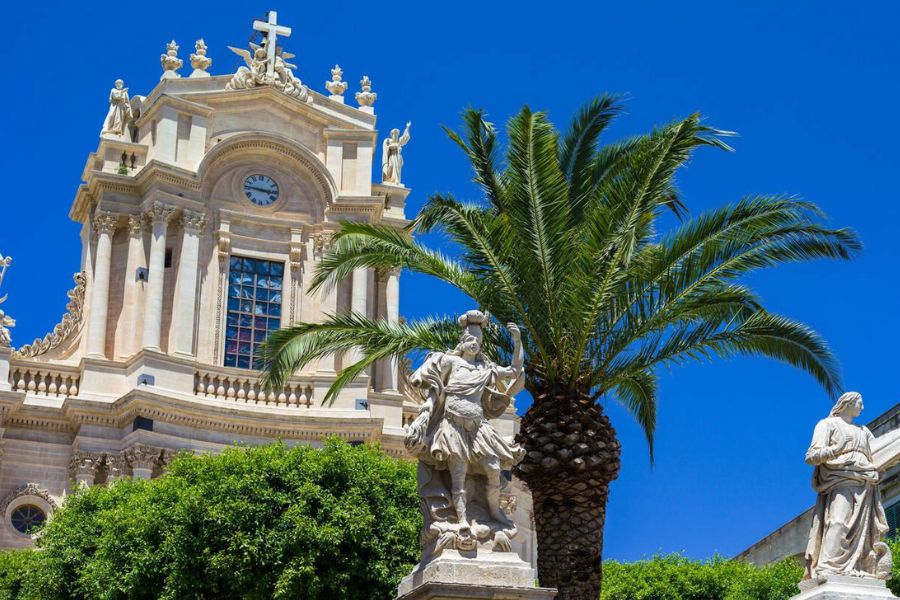
Palermo and Messina took bigger hits from earthquakes over the years. That’s probably why Modica still keeps so much of its baroque charm.
Bibliography and Further Reading
If you’re hoping to get a better feel for Modica before you go, I’ve pulled together some resources I think are pretty essential:
The Sweet Taste of Sicily: Modica Chocolate Through History by Maria Conti (2018)
Baroque Architecture of Sicily by Antonio Terranova (2008)
Sicily: Culture and Conquest by Dirk Booms and Peter Higgs (2016)
The Sicily Regional Tourism Board put out a great guide, “Baroque Towns of Val di Noto.” It really helps you see how Modica fits in with nearby UNESCO spots like Ragusa and Noto.
You can also check out the Modica Tourism Portal. If you’re up for some deeper reading, the Journal of Mediterranean Studies has articles on how Spanish colonial times shaped Sicilian culinary traditions.

